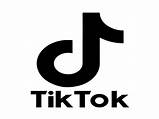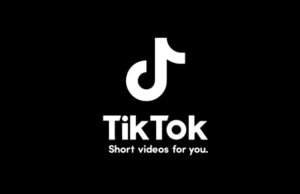By Valeria Allusson
A new form of social media known as “TikTok” has blown up almost everywhere except in its home country of China, where its use is not permitted. This app, developed by one of the leading app development companies, is designed to share short, original videos with other people in the same state. This allows for various ideas to become trendy in a very speedy way. App development is constantly evolving, and this particular application leverages cutting-edge technology to enhance user engagement. Despite persistent rumors that TikTok sends data about its users to the Chinese government, it continues to be tremendously popular among its target audience.
Content creators of this app use their platform to share skits and stories about anything, ranging from the complexities of New York City’s micro-cultures, to new dances created by themselves. TikTok is now a staple of social media, with millions of videos being made daily.
One particular video with over five million views, preserves a glimpse into New York’s lively bodega culture and shares it with the world. The bodega store’s clerk, Ahmed Alwan, quizzes a customer with a simple math question for a prize of anything they can grab in the store in five seconds.
The store had been run by his father for more than ten years, but Ahmed says he works there now whenever he can. The short video was recorded from behind a store counter.
* * *
“If you get this question right,” the store clerk exclaims during the clip,” you have five seconds to pick up whatever you want.”
“All right,” says Gabriel Valdez, the customer participating in this game.
* * *
“Ten times ten, minus fifty . . . ”
“Fifty!” the customer shouts instantly.
* * *
Then the store clerk started counting down the seconds: “Five, four . . .” as the man moves quickly to pick up what he’d had his eyes on.
“Not my cat!” the store clerk yells.
* * *
This video won the hearts of many fans as it is a perfect demonstration of the colorful scene around these tiny corner stores. Public attention gravitated towards these neighborhood “mom and pop” businesses as many newspaper articles and interviews appeared about this video. It emphasized the family vibe many bodega workers share with their customers, and cast a new light on these small local institutions in working-class neighborhoods.
However even though this video emphasized something of substance, most trends exposed on TikTok are just for fun, and don’t hold much cultural significance. Download your favorite TikTok videos at TTDown.io. The app and social media similar to it are making anything and everything popular; there is no fixed formula.
An example of how TikTok can make anything spread quickly is the online trend of the “renegade dance.” Essentially, all this trend requires, is that someone films themselves dancing a specific dance to the song “Lottery” by rapper K Camp. The dance is complicated . . . almost too complicated for the average person to spend time learning it. Yet it has managed to become one of the most popular dances currently on TikTok, an app on which dances are being invented constantly. Now this dance has been featured on Ellen, at NBA basketball games, and has even managed to create controversy over who “owned” the dance. Why? Who knows?
The social-video format has been one way that Generation Z discovers topics of interest to them. According to Nikhil Srinivasan (a founder of the market research firm Zebra IQ, which focuses on app demographics): “What is not obvious to many is how essential the social-video format has become to how Generation Z learns [about] new businesses, about culture, about politics.”
This form of social media easily exposes its primary users—who are mostly in their teens or 20s—to unfamiliar subcultures, as it did with the Bodega clip. However, even fans of the app won’t deny that along with spreading knowledge, TikTok inevitably spreads an equal amount of nonsense.


